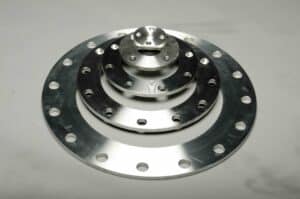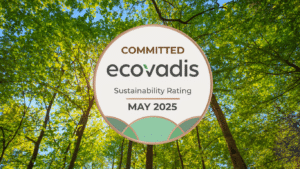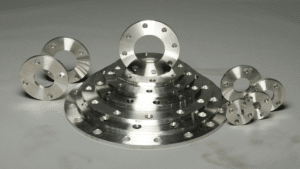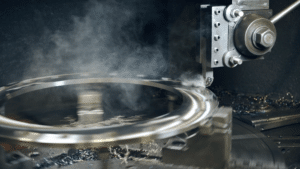What is Build America, Buy America (BABA)?
On May 14, 2022, Build America, Buy America went into effect. This new law governs domestic preferences for iron and steel, manufactured products, and construction materials for infrastructure projects that use federal dollars for funding. It follows similar rules and standards created by the American Iron and Steel (AIS) Act but has some key differences.
While the law goes into effect on this date, the U.S. EPA is still soliciting information from manufacturers, suppliers, and distributors who will be affected by this with webinars called listening sessions. The agency will do the same with engineers, consulting engineers, and contractors.
Below are details shared in the listening session for manufacturers, suppliers, and distributors.
Expanding The Requirements of AIS Domestic Preferences
BABA is Public Law 117-58 included in the Infrastructure Investment and Jobs Act (IIJA), also known as the Bipartisan Infrastructure Law (BIL)– under Title IX, Subtitle A, Part I – Buy America Sourcing Requirements.
This law requires that “none of the funds made available for a Federal financial assistance program for infrastructure…may be obligated for a project unless all of the iron, steel, manufactured products, and construction materials used in the project are produced in the United States.” According to the law a “project” is defined as, “any activity related to the construction, alteration, maintenance, or repair of infrastructure in the U.S.”
EPA indicated on its April 25 webinar that BABA expands the requirements of AIS domestic preferences. Officials noted that in most situations, BABA would use standards established by AIS in BABA. However, with the expanded requirements, more purchased items for infrastructure projects will now be covered by domestic preference laws, even if those projects historically had not been covered.
Summary:
- 100% of all Iron and Steel must be produced domestically for a project to receive and use federal funding:
- “In the case of iron or steel products, that all manufacturing processes, from the initial melting stage through the application of coatings, occurred in the United States”.
- >50% of all Manufactured Products must be produced domestically for a project to receive and use federal funding:
- “In the case of manufactured products, that – (i) the manufactured product was manufactured in the United States; and (ii) the cost of the components of the manufactured product that are mined, produced, or manufactured in the United States is greater than 55 percent of the total cost of all components of the manufactured product, unless another standard for determining the minimum amount of domestic content of the manufactured product has been established under applicable law or regulation”.
- 100% Construction Materials must be produced domestically for a project to receive and use federal funding:
- “In the case of construction materials, that all manufacturing processes for the construction material occurred in the United States.”
Oversight of this law will be handled by the Made in America Office (MIAO).
Made in America Office (MIAO)
BIL codified the Made in America Office (MIAO) and a centralized waiver process required by Executive Order 14,005. To increase reliance on domestically sourced materials, MIAO strived to improve domestic supply chains. By centralizing the waiver process, MIAO will “gather government-wide data to support decision-making to make U.S. supply chains more resilient” while also improving the transparency of waivers to ensure domestic producers have clear signals of materials required for production.
What Funding & Grant Programs Does BABA Cover?
BABA will cover all federal funding, not just those funds allocated through BIL. To be clear, this means all State Revolving Funds (SRF) and Water Infrastructure Finance and Innovation Act (WIFIA) funds trigger BABA requirements, regardless of their funding source.
In addition, it also adds new requirements to several existing EPA infrastructure programs including:
- Tribes, Territories, and District of Columbia
- Section 319 Nonpoint Source Implementation Grant Program
- National Estuary Program
- Water Infrastructure Improvements for the Nation (WIIN) Grant Program
- Sewer Overflow and Stormwater Reuse Municipal Grans (OSG)
- Alaska Native Village (ANV) Grant Program
- United States – Mexico Border Infrastructure Program
- America’s Water Infrastructure Act (AWIA) Resiliency Grant Program
- Congressionally Directed Spending/Community Project funding.
What Items Are Covered by BABA?
Items covered by BABA will be consolidated into one of three categories: iron and steel, manufactured products, and construction materials. Each item can only exist in one category, which has created many questions from manufacturers, suppliers, and distributors. The U.S. EPA is still soliciting feedback on how to define these categories further and critique the items that should or should not be included in each of them.
BABA is applied to all items “consumed in, incorporated into or affixed to an infrastructure project (aka permanently incorporated).” EPA officials said BABA does not apply to items brought to and removed from the construction site – such as rental pumps or generators or temporary scaffolding – prior to the completion of the infrastructure projects. It also will not apply to “equipment or furnishings that are used at or within the finished infrastructure project,” such as desks, movable chairs, portable computer equipment, or other items of that nature.
Iron & Steel
Iron and steel, in regard to BABA, is defined as “items that are predominantly iron or steel unless another standard applies under law or regulation.” This definition applies to all manufacturing processes, meaning the initial melting stage through the application of coatings must occur in the U.S. Meaning of all iron and steel must be produced domestically for a project to receive and use federal funding.
During the Q&A portion of the listening session, EPA officials said a good rule of thumb is to ask, “Is the furnace in the U.S.?” While this will suffice in most cases, officials encouraged manufacturers, suppliers, and distributors to contact them directly for specific answers related to their products.
Manufactured Products
All products subject to BABA must be manufactured in the U.S., meaning the “cost of components that are mined, produced, or manufactured in the U.S. is greater than 55% of the total cost of all components of the manufactured product.” Similar to the iron and steel provision, this section may change if another law or standard determines a new minimum amount for domestic content.
Included in this area of the law, products such as pumps, motors, blowers, drives, actuators, and more will be subject to this 55% rule. EPA also said they seek input from manufacturers on more complex products such as valves, hydrants, and other items to best account for them. However, they indicated they would likely land in this category for BABA applications.
Construction Materials
In the case of construction materials, “all manufacturing processes for the construction material occurred in the United States.”
The EPA provided a list of construction materials included and excluded from the construction materials category during the webinar on April 25, 2022- materials are listed below. The EPA provided a Notice of Listening Sessions and Request for Information from the Office of Management & Budget (OMB) regarding this category and encouraged industry professionals to participate in those sessions.
Included in Construction Materials:
- Non-ferrous metals
- Plastic and polymer-based products (including PVC, composite building materials, and polymers used in fiber optic cables)
- Glass (including optic glass)
- Lumber
- Drywall
Excluded from Construction Materials:
- Items made primarily of iron or steel
- Manufactured products (as described above)
- Cement and cementitious materials
- Aggregates such as stone, sand, or gravel
- Aggregate binding agents/additives
What Waivers are There for BABA?
The U.S. EPA has the authority to waive BABA based on three waivers: a public interest waiver, a non-availability waiver, and an unreasonable cost waiver.
Public Interest Waiver
The Public Interest Waiver is used when “applying the domestic content procurement preference would be inconsistent with the public interest.”
Non-availability Waiver
The Non-availability Waiver is used when the “types of iron, steel, manufactured products or construction materials are not produced in the United States in sufficient and reasonably available quantities or of satisfactory quality.”
Unreasonable Cost Waiver
The Unreasonable Cost Waiver is used when the “inclusion of iron, steel, manufactured products, or construction materials produced in the United States will increase the cost of the overall project by more than 25%.”
What Principles Govern BABA Waivers?
The EPA uses three principles to guide its decision-making when determining whether it will or will not issue a waiver for BABA. Each waiver, it says, will be time-limited, targeted, and conditional.
The time-limited principle means the EPA will determine the period during which the waiver may be applied. This period will be short and clearly defined to ensure producers have quick access to the market.
The targeted aspect is because the EPA believes that “waivers that are overly broad will tend to undermine domestic preference policies.” As such, broad waiver considerations will receive greater scrutiny than those with a narrow focus and scope.
Lastly, all waivers are conditional, allowing the EPA to provide waivers supporting BABA policies through specific conditions.
Project Specific Waivers vs. General Applicability (National) Waivers
The principles for waivers describe the different use cases for the waiver types. For project-specific waivers, MIAO will request a review after a 15-day public comment period. Meanwhile, MIAO will request a review after a 30-day public comment period for General Applicability waivers and approved-waivers will be reviewed every five years.
Share Feedback With The EPA
The EPA has requested all feedback be emailed to BABA-OW@epa.gov or SRF_AIS@epa.gov.





